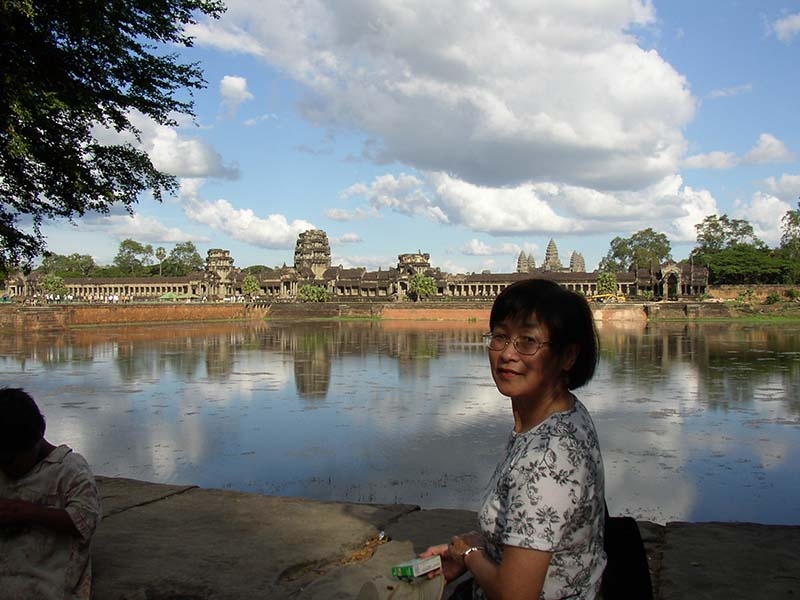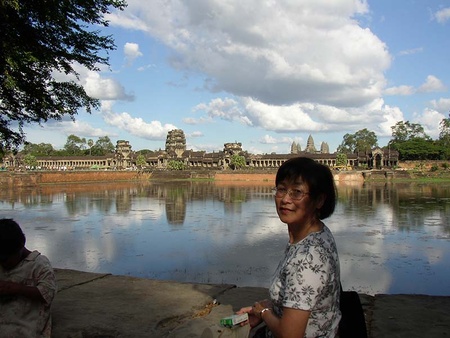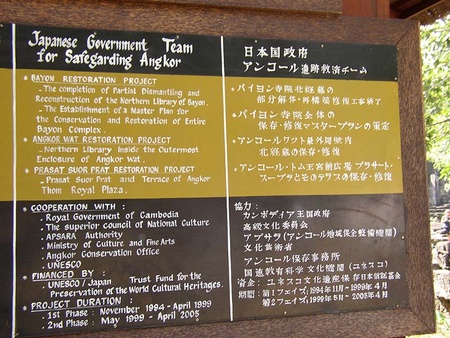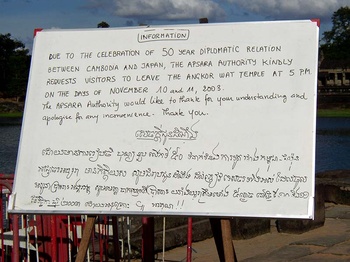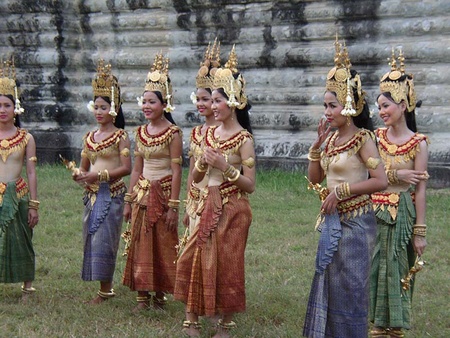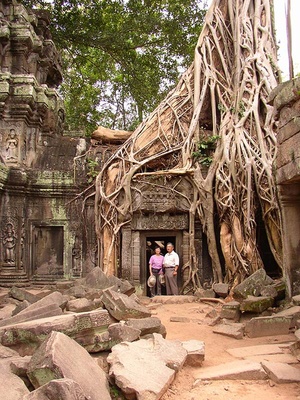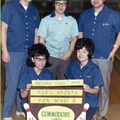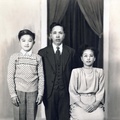The Japanese traders who were the first to visit Cambodia were concentrated in Japanese quarters around Phnom Penh and Pinalu. An estimated 1,500 Japanese, mostly merchants, Christians, and some former samurai, lived in the region in the 17th century. Some came to hold fairly important positions such as, for example, guards or royal functionaries. The Christians were ministered by three Japanese Jesuit priests who were born in Japan but were educated and ordained in Macao, considered to be the Rome of East Asia at that time.1
Outside the two main quarters, which were Christian, there is evidence that Japanese lived at the Buddhist complex in Angkor, now designated a UNESCO World Heritage site. Angkor was once a thriving metropolis that contained all of the elements of a modern city, such as irrigation, religious edifices, agriculture, and military operations. For four centuries it was the capital of the Khmer Empire. Kenryo Shimano is said to have lived here between 1632 and 1636 and is credited with drawing a very detailed map of the temple. Furthermore, at least fourteen Japanese inscriptions have been found in the area. One of the most renowned Japanese inscriptions belonged to Ukondafu Kazufusa who had visited Angkor and celebrated Khmer’s New Year there in the year 1632.2
With Japan’s self-imposed isolation by the Tokugawa Shogunate, these communities eventually merged with the local populations. Owing to the lack of new Japanese arrivals and very little possibility of renewing themselves, their cultural heritage—language, religion, traditions—disappeared.
Cambodia was a protectorate of France from 1867 until 1953, except for five years between 1941 and 1945 when it was occupied by the Japanese Empire. In 1953, Cambodia gained its independence from France and regained control of Angkor Wat. Its importance to Cambodia is evident in that its image is depicted on its national flag. Since designated a UNESCO World Heritage site in 1991, Japan has provided some US$1.2 billion in assistance to the restoration of Angkor and to the preservation of artifacts and records. It remains Cambodia’s top donor country.
Angkor was designated a UNESCO World Heritage site in 1991. The following year, the Horyu-ji area in Japan received the same prestigious designation. They both reveal powerful spiritual bonds between people and their environment.
The Temple of Angkor Wat, built in the 9th century, is the most famous among the hundred plus temples throughout the site. Some were originally built as Hindu temples, while some were built as Buddhist temples, and some were re-converted over the years depending on the ruler’s beliefs. Today, most of Angkor’s major temples house at least a few Buddha statues and are visited by a steady stream of monks and worshippers.
In the Horyu-ji area of Nara Prefecture there are forty-eight Buddhist monuments dating back to the 7th and early 8th century. The temples, monasteries, and other associated buildings are the earliest Buddhist monuments in Japan and some are the oldest wooden structures in the world. It was from here that Buddhism blossomed and spread throughout Japan.
Our visit to Angkor in 2003 ended early because of a celebration to commemorate 50 years of diplomatic relations between Japan and Cambodia. In addition to the official celebration, we saw pieces of paper on telephone wires and posts written with black marker by residents of Siem Reap that said “Thank you Japan.” It was also here that we were introduced to Ma Po Nasu at a small Japanese restaurant—a dish we now cook regularly.
As awe inspiring as are Angkor Wat and Horyu-ji, there is no denying the power of nature. Unlike most of Angkor Wat, which has been the focus of ongoing restoration, Ta Prohm has been left alone and Mother Nature appears to be reclaiming the land.
Notes:
1. Ribeiro, Madalena, The Japanese Diaspora in the Seventh Century. According to Jesuit Sources. CHAM, New University of Lisbon.
Fundação Oriente scholarship holder, Bulletin of Portuguese-Japanese Studies, ISSN (Printed Version): 0874-8438 Universidade Nova de Lisboa, Portugal.
2. Cambodiea-travel.com/khmer/post-angkor.htm
© 2014 Masako and Stan Fukawa



